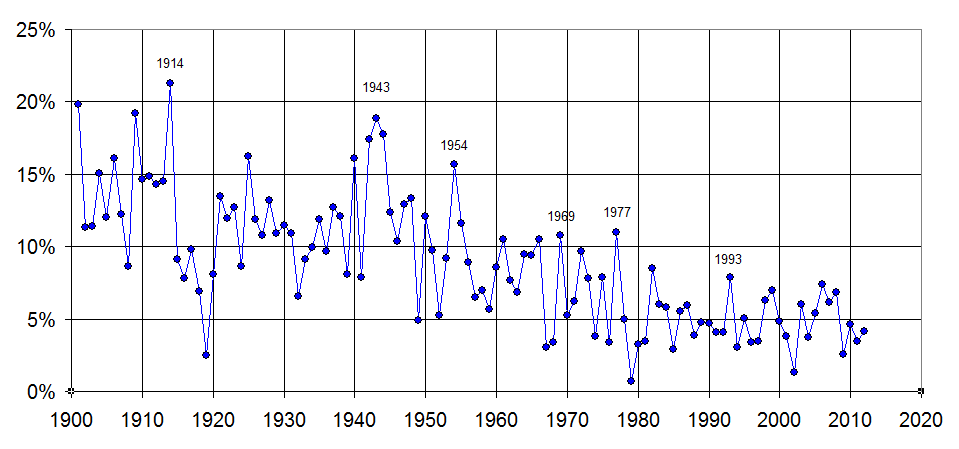Here’s a simple calculation that reveals lots of interesting stuff. Using B-R.com’s new option to limit searches to players who qualify as rookies (using the modern definition only), it’s easy to find what fraction of players each season who qualified for the batting title also qualified as rookies.
This is what the data looks like:
The overall trend is clear. In the early part of the 20th century, about 15% of full-time players were rookies. There is an uptick in 1914 as the Federal League was formed and lots of new players were brought in. In the late 1910s, nearly no rookies played full seasons but by the 1920s the rate was back up to about 12%. When World War II came around, the rate spiked as a lot of established players left for military service. There was a spike from 1952 into 1953, due to the Korean War. The rate spiked even further in 1954, but I’m not sure why, as that war was already over and guys like Ted Williams and Willy Mays were back.
By the 1960s, the rate of rookies dropped down to about 9%. In the 1970s, it went even lower, plummeting to an all-time low in 1979. From 1980 on, the rate has been relatively consistent around 5%. Note a few upticks in expansion years of 1969, 1977, and 1993.
I wonder why the fraction of rookies has dropped gradually over time? September call-ups probably have something to do with it–more players qualifying as rookies before playing a full qualifying season. There may just also be less playing of rookies full time–for example fewer rookies winning jobs in spring training.
What else can we surmise from this data?

